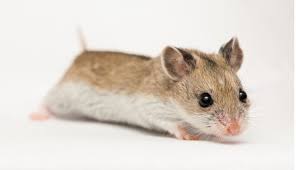
Chinese Hamster
Conditions of detention
Chinese hamsters prefer a vertical cage with plenty of opportunities for climbing, as they are more mouse-like in their behavior.
Useful Fact: They can be housed in pairs or small groups, but introduce them carefully to avoid fighting.
Nutrition and diet
Their diet should include hamster pellets, grains, fresh vegetables, and occasional fruits. Protein sources like mealworms can also be provided.
Useful Fact: Due to their small size, Chinese hamsters require smaller portions and careful monitoring of their diet to prevent obesity.
Health
Prone to diabetes and obesity if overfed or given sugary foods.
Useful Fact: Monitor their weight regularly and adjust their diet as needed to prevent health issues.
Grooming and care
Chinese hamsters are relatively low-maintenance in terms of grooming. Provide them with a sand bath to help maintain their coat.
Useful Fact: Their cage should be cleaned every week to prevent the build-up of ammonia from urine.
Education and training
Chinese hamsters can be tamed with regular handling and may even learn to recognize their owner’s voice.
Useful Fact: Due to their small size and agility, they can be more challenging to handle, so gentle and consistent training is essential.
Toys and entertainment
They enjoy climbing toys, running wheels, and small tunnels to explore.
Useful Fact: A variety of toys helps keep them mentally stimulated and prevents boredom.
Safety
Ensure their cage is escape-proof and free from small objects they could swallow.
Useful Fact: Due to their size, they are more prone to escaping through small gaps, so a secure environment is crucial.
Accessories
Climbing toys, a running wheel, and a secure hideout are essential.
Useful Fact: Provide them with a variety of textures and materials to explore and chew on.
Socialization
They can be social with other Chinese hamsters if introduced properly, but caution is needed to avoid fights.
Useful Fact: Regular human interaction helps keep them tame and reduces the risk of aggressive behavior.
Travel and Transportation
Use a small, secure carrier with familiar bedding and a hideout.
Useful Fact: They can be sensitive to stress during travel, so keep trips short and minimize disturbances.
Behavior and psychology
Chinese hamsters are generally calm and less aggressive than other dwarf species, but they can be shy and need time to warm up to handling.
Useful Fact: Understanding their shy nature can help in creating a calm and stress-free environment.
Legal aspects
Typically legal to own without restrictions, but local laws should always be checked.
Useful Fact: Ensure that any breeding or selling complies with local regulations to avoid legal issues.


